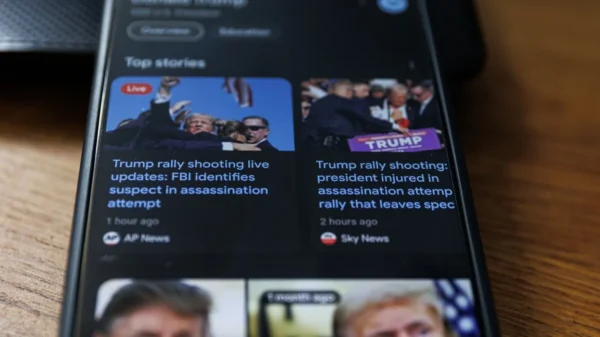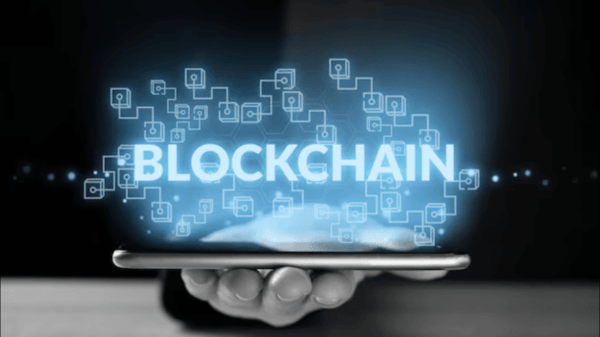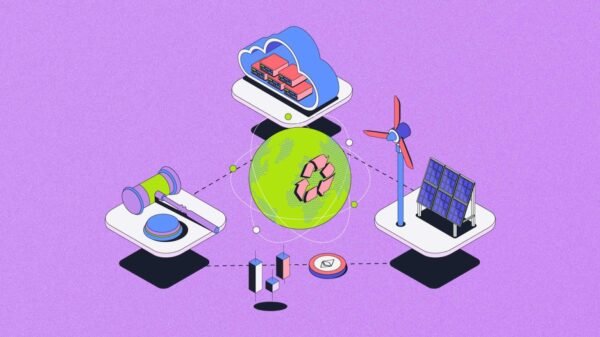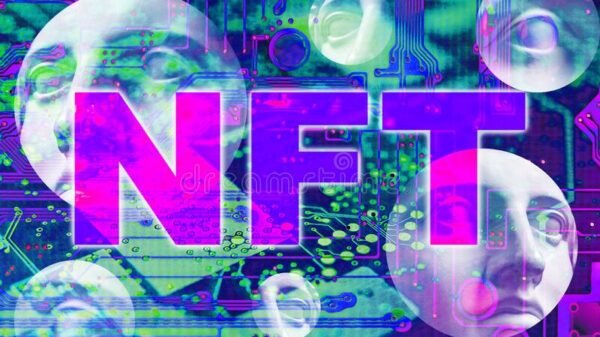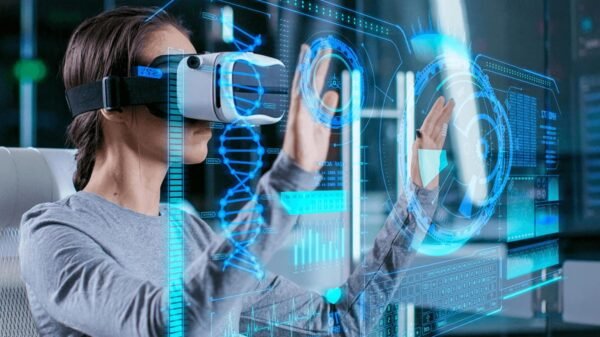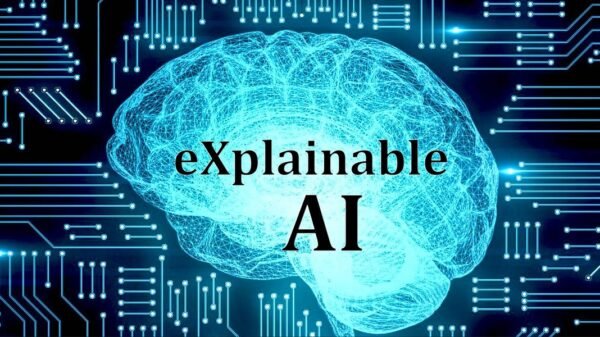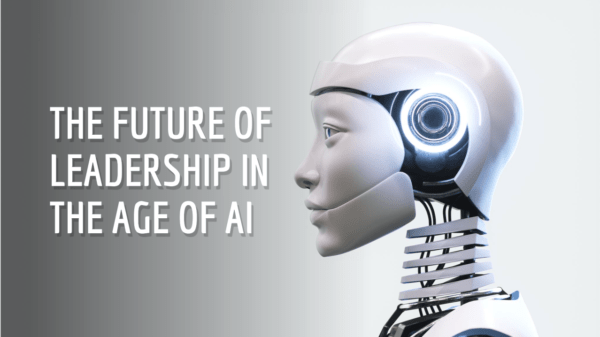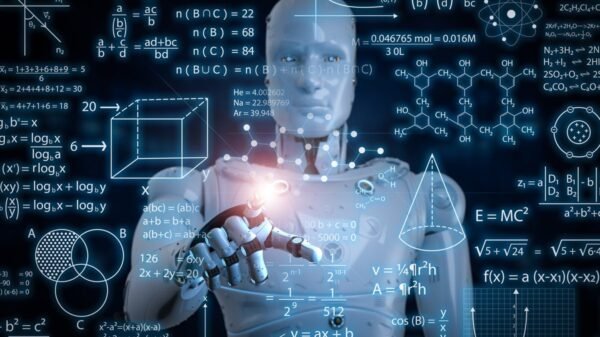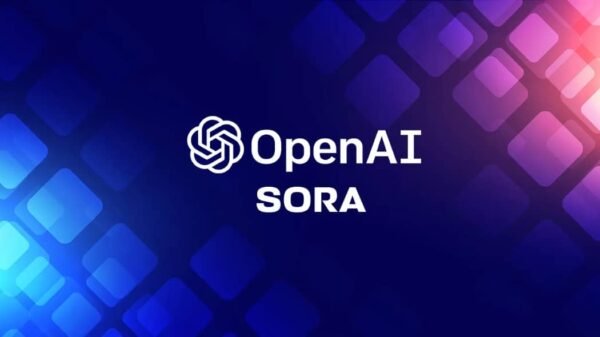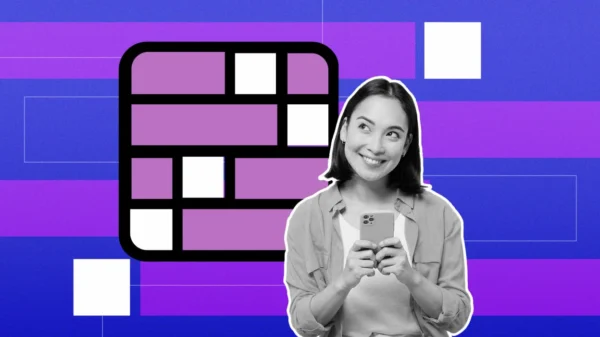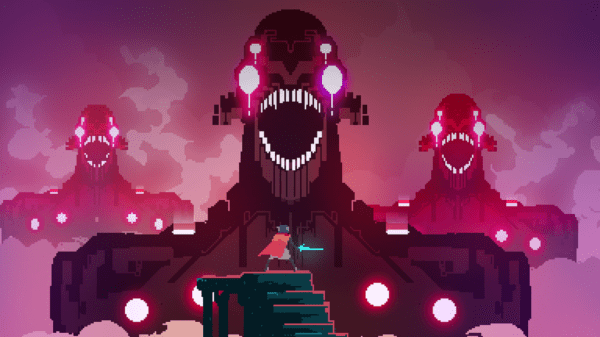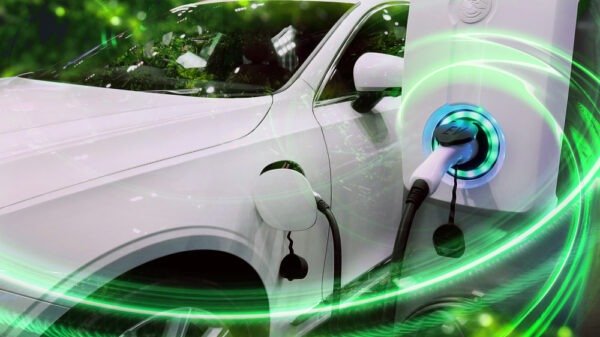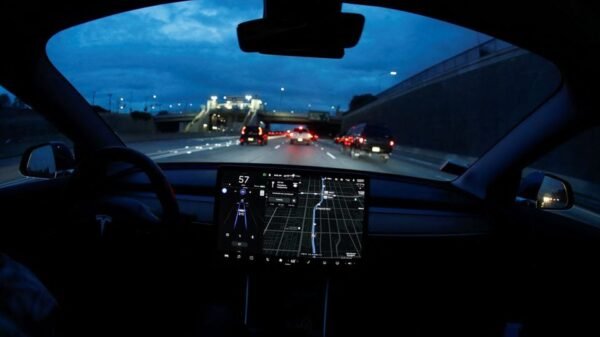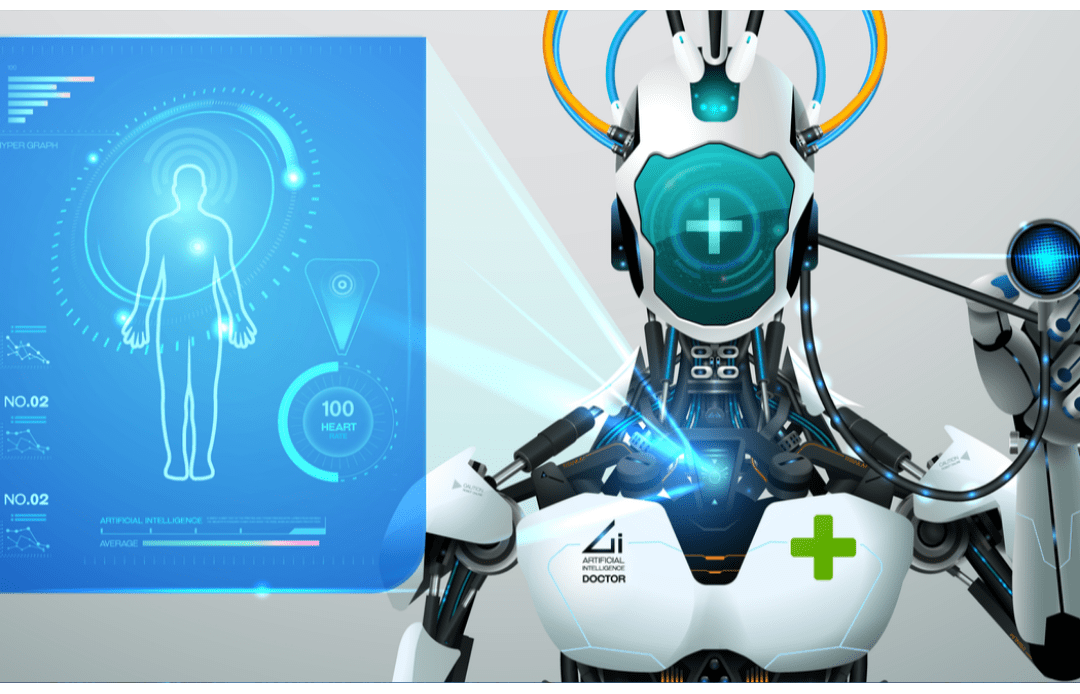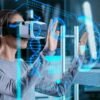AI and Robotics: Transformative Technologies in Modern Healthcare
“Step into a future where AI and robots reshape healthcare, from precision surgeries to personalized treatments.”
Key Takeaways:
- AI and robots are reshaping healthcare, improving diagnosis, treatment, and surgery.
- AI diagnoses diseases faster and creates personalized treatments.
- AI accelerates drug discovery and design.
- Robots offer precise surgeries and aid in rehabilitation.
In the ever-evolving healthcare landscape, a remarkable transformation is underway, driven by the convergence of artificial intelligence (AI) and robotics. These groundbreaking technologies are not just reshaping the way we approach medical care; they’re ushering in an era of possibilities that were once confined to the realms of science fiction. From enhancing diagnostics with unprecedented accuracy to revolutionizing surgical procedures, the marriage of AI and robotics is pushing the boundaries of what’s achievable in healthcare.
However, as with any paradigm shift, this union of technology and medicine has challenges. Alongside the promises of streamlined processes and improved patient outcomes come concerns about data security, ethical considerations, and the delicate balance between human expertise and automated precision. As we navigate this transformative journey, we must delve into the potential benefits and the ethical complexities that arise when AI and robotics take center stage in healthcare.
Join us as we embark on a deep dive into AI and robotics in healthcare, exploring their revolutionary impact, the novel opportunities they offer, and the thought-provoking dilemmas they present. In this article, we’ll dissect the role of AI in diagnostics and personalized treatment, uncover the advancements of robotics in surgical precision, and unravel the intricacies of human-machine collaboration. As we embrace the future of healthcare disruption, we’ll also confront questions about regulatory frameworks and the empowerment of medical professionals in an AI-infused world.
Revolutionizing Healthcare Through AI and Robotics
In the ever-evolving healthcare landscape, a remarkable transformation is underway, driven by the convergence of artificial intelligence (AI) and robotics. These groundbreaking technologies are not just reshaping the way we approach medical care; they’re ushering in an era of possibilities that were once confined to the realms of science fiction. From enhancing diagnostics with unprecedented accuracy to revolutionizing surgical procedures, the marriage of AI and robotics is pushing the boundaries of what’s achievable in healthcare.
The Role of AI in Modern Healthcare
In modern healthcare, AI has emerged as a powerful tool, changing how we diagnose and treat diseases. AI-driven diagnostics are at the forefront of this revolution, changing the speed and precision with which diseases are identified. Through analyzing vast datasets and utilizing advanced algorithms, AI can identify subtle patterns and markers that might go unnoticed by human eyes. This leads to quicker diagnoses and enhances accuracy, reducing the risk of misdiagnoses that can have dire consequences.
Moreover, AI’s impact extends beyond diagnostics into personalized treatment plans. By analyzing patient data, including medical history, genetic makeup, and lifestyle factors, AI can tailor treatment approaches to individual patients. This level of personalization takes into account not only the disease itself but also the unique attributes of the patient, ensuring more effective and targeted interventions. It’s a step towards precision medicine, where treatments are as unique as the individuals receiving them.
Drug Discovery and Development
The road from drug discovery to development has historically been long and arduous in the realm of pharmaceuticals. However, AI is now playing a pivotal role in expediting this process. The analysis of vast datasets containing molecular structures, chemical properties, and biological interactions has become a task perfectly suited for AI algorithms. AI is breathing new life into the drug discovery pipeline by identifying potential candidates with greater speed and accuracy.
AI-assisted drug design is another revolutionary concept that holds immense promise. Using computational modeling and simulations, AI can predict how different compounds will interact with the human body at a molecular level. This saves time and resources as the focus shifts toward the most promising candidates early in the process. Additionally, virtual clinical trials, where AI simulations are used to predict the outcomes of drug trials, could soon replace or complement traditional clinical trials, making the process more efficient and cost-effective.
Robotics Advancements in Medical Procedures
The realm of medical procedures has also witnessed a profound transformation through robotics. One of the most striking applications is in the domain of minimally invasive surgeries. Robotic systems have opened new avenues for surgical precision and automation. These systems, controlled by skilled surgeons, offer precision that is difficult to achieve with human hands alone. Through small incisions and robotic arms, surgeons can manipulate surgical instruments with enhanced agility and accuracy, resulting in shorter recovery times and reduced patient scarring.
The precision and stability offered by robotic surgical assistants are particularly evident in complex surgeries involving delicate tissues or intricate structures. Whether it’s cardiac surgery, neurosurgery, or even microsurgeries, robotics play a pivotal role in ensuring that the surgeon’s actions translate into precise and controlled movements, minimizing the risk of human error.
Rehabilitation and Physical Therapy
Beyond the operating room, robotics is making strides in rehabilitation and physical therapy. Robotic devices, such as exoskeletons and rehabilitation robots, aid patients in regaining mobility and function after injuries or surgeries. These devices provide targeted assistance and support to patients, guiding them through exercises and movements that aid recovery.
Exoskeletons, for instance, are wearable robotic devices that can assist individuals with impaired mobility in walking and performing daily activities. They are designed to mimic natural human movement patterns, providing both physical support and encouragement for patients as they work towards regaining their independence. Similarly, rehabilitation robots can deliver repetitive and precise movements, helping patients rebuild muscle strength and coordination.
Challenges and Ethical Considerations
While integrating AI and robotics holds immense promise for healthcare, it also has its challenges and ethical considerations. One significant concern is patient data privacy and security. As these technologies rely on vast amounts of patient data, there’s a pressing need to ensure that sensitive medical information is handled securely. Addressing this concern often involves exploring innovative solutions, such as blockchain technology, which offers transparency and encryption for data storage and sharing.
Another critical consideration is the balance between human expertise and the capabilities of AI and robotics. Although these technologies can increase accuracy and effectiveness, qualified medical professionals must oversee them. Maintaining a balance where human judgment and intervention complement automated processes is essential to ensuring patient safety and optimal outcomes.
Embracing the Future of Healthcare Disruption
As AI and robotics continue to weave their transformative threads through the fabric of healthcare, the industry is poised for a revolution unlike any before. With the potential to streamline processes, enhance patient care, and redefine medical practices, these technologies are laying the groundwork for a future that once seemed confined to imagination.
Overcoming Regulatory Hurdles
However, as we navigate this path of innovation, we encounter a formidable challenge: the need to adapt regulations to keep pace with the rapid evolution of AI and robotic technologies. The traditional regulatory frameworks that have guided healthcare practices for decades often need help to encompass these cutting-edge advancements’ intricacies. The dynamic nature of AI algorithms and the complexity of robotic systems can make it challenging for regulatory bodies to establish standardized guidelines.
Efforts are underway to address this regulatory gap and pave the way for seamlessly integrating AI and robotics into healthcare. Collaborations between regulatory agencies, industry leaders, and researchers are striving to develop clear and comprehensive guidelines that ensure patient safety, data privacy, and the ethical use of these technologies. By establishing a robust regulatory framework, we can ensure that the potential benefits of AI and robotics are harnessed without compromising patient well-being.
Empowering Medical Professionals
Beyond regulatory considerations, AI and robotics promise to transform the very roles of healthcare professionals. One notable impact is alleviating administrative burdens that consume a significant portion of medical practitioners’ time. With the ability to automate tasks such as data entry, appointment scheduling, and billing, AI-driven systems free up medical professionals to direct their focus where it truly matters: patient care.
Imagine a scenario where doctors can dedicate more time to face-to-face interactions with patients, listening intently to their concerns and providing empathetic care. AI-enabled virtual health assistants can efficiently handle routine inquiries, appointment reminders, and follow-up instructions, ensuring patients receive necessary information promptly while doctors engage in more meaningful interactions.
Furthermore, AI’s role in diagnostics is paramount. AI-assisted diagnostic tools empower doctors with a wealth of information and insights to aid their decision-making processes. By analyzing vast datasets, these tools can present physicians with potential diagnoses, treatment options, and even predictions about patient outcomes. More informed and precise medical decisions result from this collaborative approach, which augments the knowledge of medical professionals with AI’s analytical capabilities.
In this evolving landscape, doctors transition from mere technology users to orchestrators of a harmonious blend of human compassion and technological precision. This synergy enables them to harness the full potential of AI and robotics to provide healthcare that is not only advanced but deeply human-centered.
AI and Robotics in Healthcare
How is AI a threat to healthcare?
AI’s integration into healthcare has sparked both excitement and apprehension. One concern centers around the potential for misdiagnoses and the overreliance on AI-driven systems for critical decision-making. While AI algorithms excel at processing vast amounts of data and identifying patterns, they may need the more nuanced understanding and context that human doctors bring. Misinterpreting subtle symptoms or omitting crucial details could lead to inaccurate diagnoses and compromised patient care.
The importance of proper validation and human oversight must be addressed to mitigate this threat. AI algorithms must undergo rigorous testing and validation, ensuring their recommendations align with established medical knowledge. Moreover, human healthcare professionals should collaborate closely with AI systems, using them as tools to augment their expertise rather than replace it entirely. This symbiotic relationship between AI and human judgment is crucial to maintaining the highest patient safety and care standards.
How Can AI Be Used in the Healthcare Industry?
AI’s potential in the healthcare industry is vast and multifaceted. At the forefront is its application in predictive analytics, where AI algorithms analyze patient data to forecast potential health outcomes. By identifying patterns and risk factors, AI can alert healthcare providers to potential issues before they escalate, enabling proactive interventions and personalized treatment plans.
Moreover, AI’s impact extends to administrative tasks that often burden healthcare professionals. AI can handle tasks such as appointment scheduling, medical record organization, and billing through automation, freeing up medical staff to dedicate more time to patient care. This enhances efficiency and contributes to a more satisfying patient experience.
Virtual health assistants represent another facet of AI’s role in healthcare. These digital companions can provide patients with information about their conditions, medication reminders, and answers to common medical questions. They serve as a bridge between patients and healthcare providers, ensuring patients can access timely and accurate information.
In diagnostics, AI’s ability to analyze medical images—such as X-rays, MRIs, and CT scans—can aid in early disease detection. The algorithms can identify subtle abnormalities that the human eye might miss, improving the accuracy of diagnoses and enabling quick interventions.
In conclusion, AI’s potential to transform healthcare is undeniable. AI’s role is diverse and promising, from predictive analytics and administrative streamlining to virtual health assistants and enhanced diagnostics. By integrating AI as a tool that supports human expertise, healthcare professionals can harness its power to provide more accurate, efficient, and patient-centered care.
Conclusion
The future of healthcare stands on the cusp of an extraordinary transformation as artificial intelligence (AI) and robotics redefine the possibilities of medical practice. The journey we’ve embarked upon—from enhancing diagnostics and personalized treatment through AI to harnessing the precision of robotics in medical procedures—reveals a landscape where innovation intertwines with ethical considerations. As we navigate this uncharted territory, we must recognize the potential benefits and challenges of integrating these technologies into the healthcare ecosystem.
AI’s capacity to analyze vast datasets with unparalleled speed and accuracy has reshaped the diagnostic landscape, enabling early disease detection and personalized treatment plans. The drug discovery journey has been expedited through AI-driven analysis, ushering in a new era of tailored medications and more efficient clinical trials. Meanwhile, robotics has taken surgical precision to unprecedented heights, leading to minimally invasive procedures and enhanced rehabilitation strategies that redefine the road to recovery.
The need for regulatory frameworks that adapt to the dynamic nature of AI and robotics is paramount to ensuring patient safety and data privacy. The human touch remains irreplaceable, and the synergy between human expertise and technological capabilities is vital to maintaining the highest standards of care.
AI and robotics can empower healthcare professionals, liberating them from administrative tasks and augmenting their decision-making prowess. The harmonious interplay between AI and doctors transforms healthcare into a realm where empathy and precision coexist, ultimately improving patient outcomes and experiences.
In this era of disruption, we’re called upon to embrace a future where AI and robotics amplify the remarkable potential of human care. With cautious optimism, we strive to harmonize innovation with ethical considerations, ensuring that the cornerstone of healthcare—compassion—is unwavering in the face of technological advancements. As AI and robotics revolutionize healthcare, our responsibility lies in navigating this transformative journey with a commitment to patient well-being, the advancement of medical knowledge, and a deep respect for the noble art of healing.


